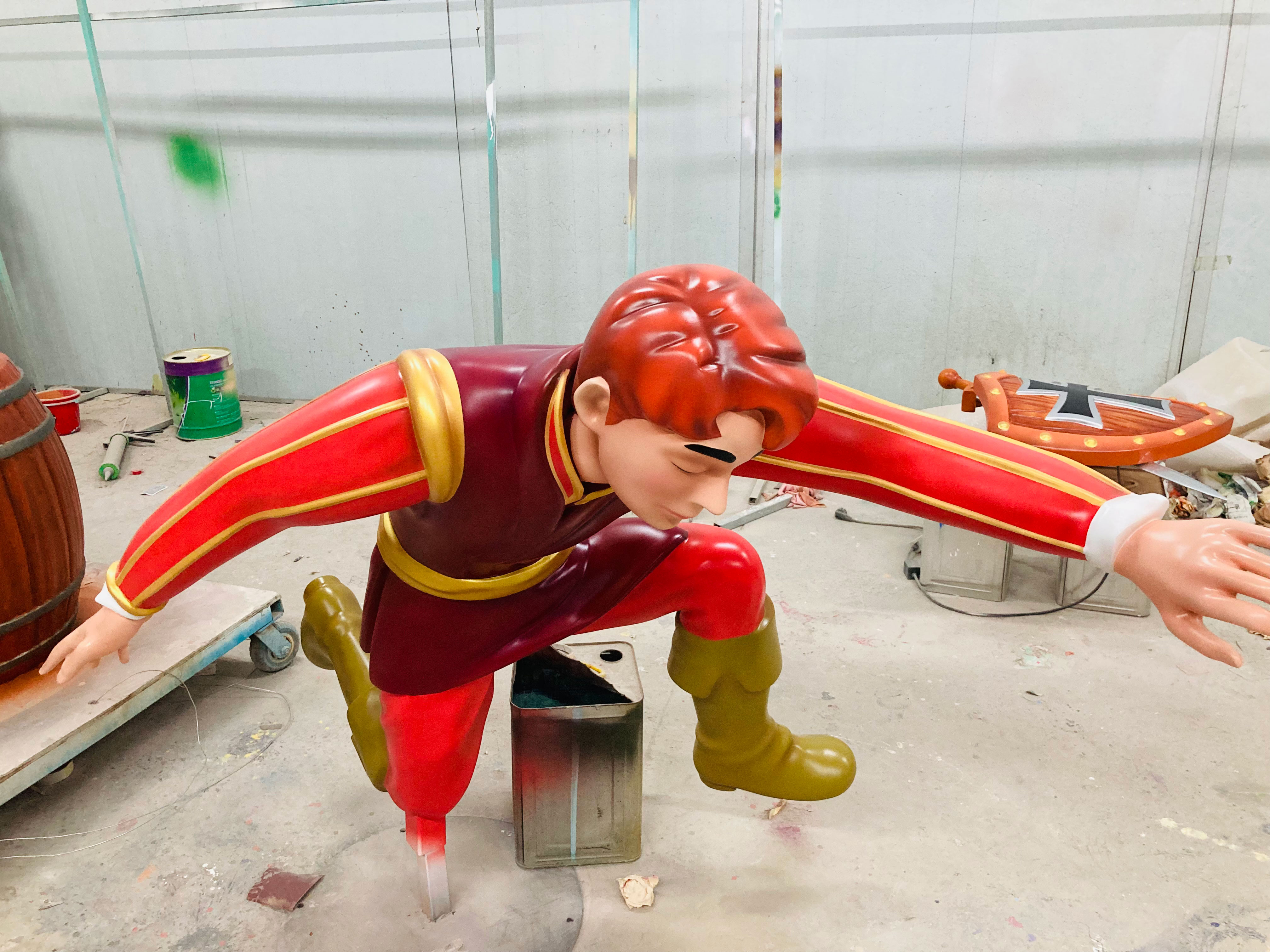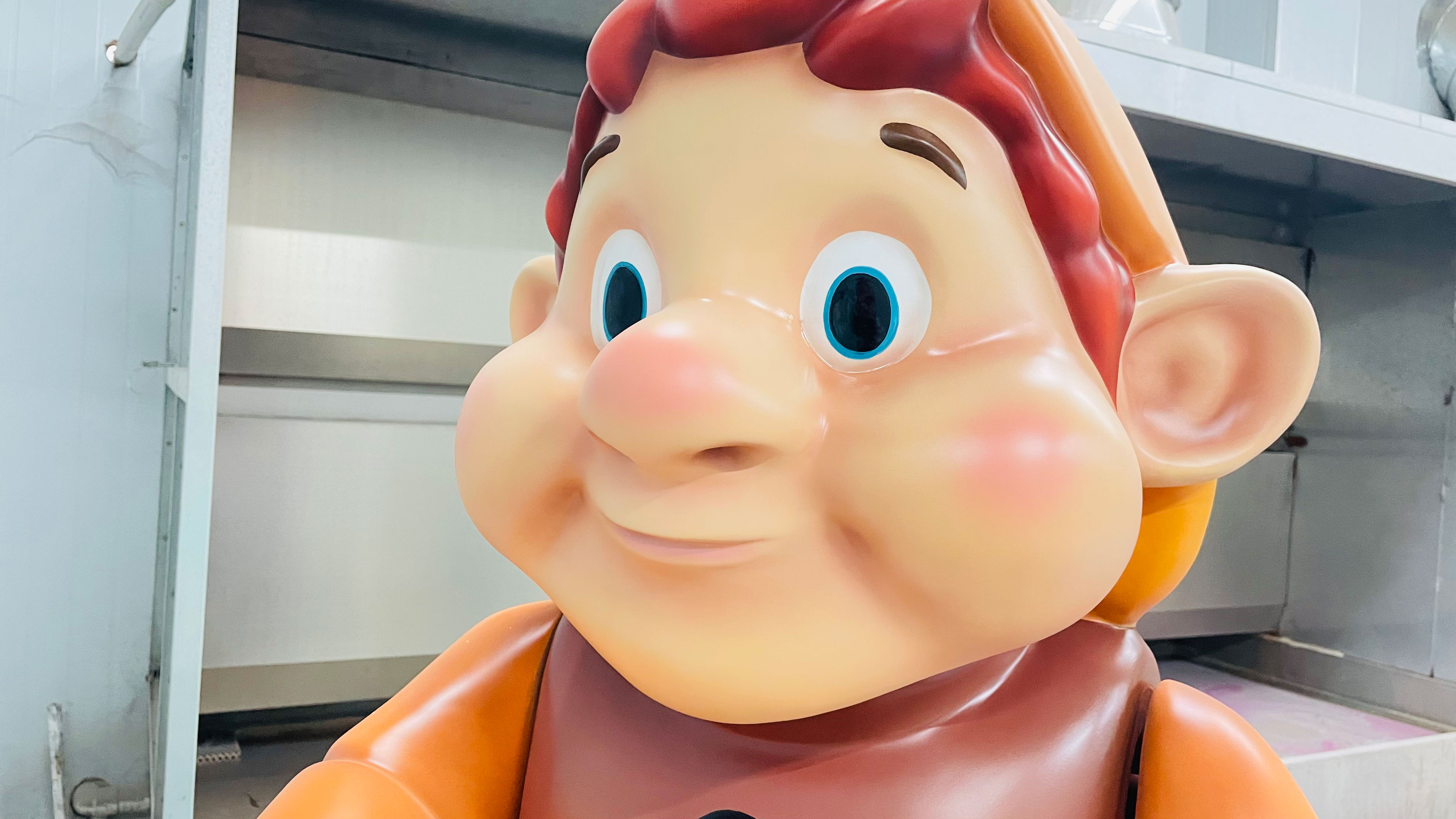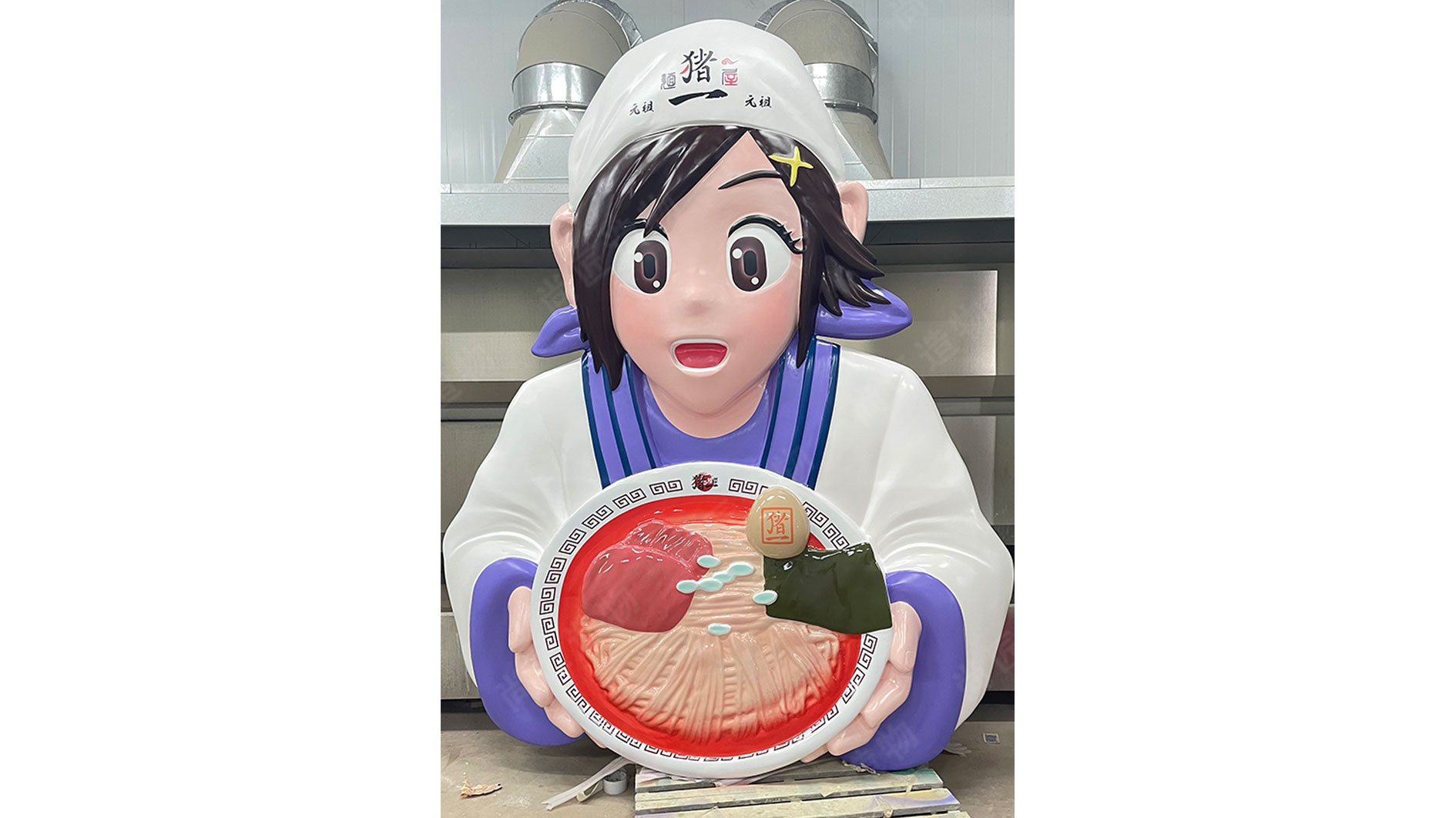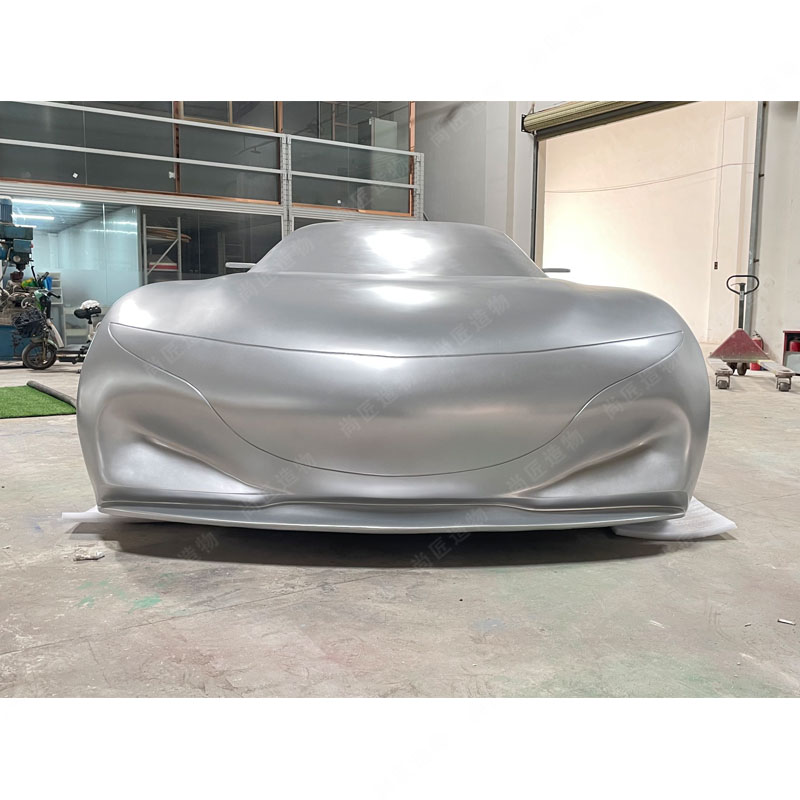Key Takeaways
Yen Jui-Lin’s whimsical wooden artistry redefines traditional craftsmanship by merging playful cartoon figures with organic, botanical forms. These creations feature exaggerated facial expressions—wide grins, bulging eyes, and tilted heads—that evoke a sense of childlike wonder. The figures often sprout vine-like limbs or leafy protrusions, blurring the line between humanoid characters and natural growth.
"Wood carries a history, but carving cartoonish forms into it lets me rewrite that narrative with humor and fantasy." —Yen Jui-Lin
A hallmark of these works is their narrative depth. Each piece hints at untold stories, whether through a character’s mischievous pose or intricate patterns resembling storybook illustrations. For instance, a table below contrasts traditional wooden sculptures with Yen’s style:
| Traditional Wooden Art | Yen Jui-Lin’s Style |
|---|---|
| Realistic human/animal forms | Hybrid plant-cartoon figures |
| Subtle expressions | Exaggerated, emotive features |
| Cultural or religious themes | Whimsical, open-ended narratives |
To appreciate these works, observe how curved lines mimic plant tendrils and how polished surfaces contrast with rough, bark-like textures. While rooted in Taiwanese woodworking traditions, the art embraces universal themes of imagination, making it accessible across age groups.
Tip: When viewing Yen’s pieces, rotate them slowly—many designs reveal hidden details, like carved symbols or asymmetrical elements, from different angles.

Whimsical Wooden Art: Playful Cartoon Figures Explored
Yen Jui-Lin’s wooden creations redefine traditional craftsmanship by merging playful cartoon aesthetics with organic, botanical forms. These whimsical figures feature exaggerated facial expressions—wide, curious eyes and mischievous grins—that evoke the charm of animated characters. Their bodies often twist into plant-like shapes, with limbs resembling vines or branches, blurring the line between human and nature. While the artist’s primary medium is wood, his approach shares conceptual parallels with modern stainless steel sculpture, particularly in balancing structural precision with fluid, imaginative design. Each piece tells a visual story, drawing inspiration from folklore and children’s tales, yet avoids literal narrative to prioritize emotional resonance. The carvings maintain a tactile warmth unique to wood, contrasting the sleekness of metalwork while celebrating imperfections like grain patterns as intentional design elements. This fusion of cartoon whimsy and natural motifs reflects both contemporary art trends and Taiwan’s rich woodworking heritage, offering a fresh perspective on how traditional materials can animate fantastical forms.

Yen Jui-Lin’s Quirky Plant-Like Wooden Characters
Yen Jui-Lin’s wooden creations defy conventional categorization, merging organic botanical forms with cartoonish charm. His figures often resemble anthropomorphic plants, with limbs that twist like vines and faces etched with exaggerated, playful expressions. By carving reclaimed wood into bulbous trunks, spiraled textures, and leaf-like appendages, Jui-Lin blurs the line between flora and character design. This approach contrasts sharply with Realistic sculpture, opting instead for a whimsical aesthetic that prioritizes imaginative storytelling over anatomical precision.
The artist’s work reflects a deep understanding of wood’s natural grain, using knots and imperfections to accentuate quirks in his figures’ personalities. Curved limbs might sprout unexpected buds, while torsos taper into root-like bases, grounding each piece in a fantastical ecosystem. Jui-Lin’s style draws from Taiwanese folk art traditions yet injects modern cartoon sensibilities, creating hybrid forms that feel both nostalgic and inventively fresh. These plant-like characters serve as visual metaphors for growth and transformation, their playful designs inviting viewers to reimagine nature’s role in artistic expression.
Exaggerated Expressions in Whimsical Carved Cartoons
Yen Jui-Lin’s wooden figures captivate viewers through their theatrical facial features—eyes widened to comical proportions, mouths stretched into grins or gasps, and brows arched in perpetual surprise. These exaggerated expressions transform static wood into dynamic characters, evoking emotions ranging from mischievous delight to exaggerated bewilderment. By manipulating proportions and carving techniques, the artist amplifies personality traits, ensuring each figure communicates its narrative without relying on text or context.
The craftsmanship behind these expressions involves precise gouging and smoothing to create depth, with shadows accentuating wrinkles, dimples, or raised cheeks. This approach draws inspiration from classic animation principles, where exaggerated features heighten emotional resonance. For instance, a character’s furrowed brow might signal mock seriousness, while bulbous eyes suggest childlike curiosity. Such details align with Yen’s broader exploration of Cartoon sculpture, blending traditional woodworking with contemporary visual storytelling.
While the expressions dominate first impressions, they harmonize with other elements—twisted botanical forms or asymmetrical limbs—to create cohesive, whimsical personalities. This interplay ensures the figures feel alive, as if frozen mid-gesture in a larger, unseen story. The technique not only showcases technical skill but also invites viewers to imagine the scenarios behind each carved expression, bridging art and audience through silent, playful dialogue.
Storybook-Inspired Wooden Figures by Yen Jui-Lin
Yen Jui-Lin’s wooden figures evoke the charm of illustrated storybooks, blending childlike wonder with sophisticated craftsmanship. Drawing from folklore and fantasy narratives, his sculptures feature characters with oversized heads, elongated limbs, and eyes that seem to hold untold secrets. These figures often incorporate subtle nods to classic tales—a curled tail reminiscent of a dragon’s coil or a hat tilted at a mischievous angle. Unlike static carvings, Jui-Lin’s work hints at motion, with poses that suggest mid-action sequences, as if frozen between pages of a fantastical novel. This dynamic quality aligns with principles seen in kinetic sculpture, where implied movement invites viewers to imagine the next scene.
Botanical motifs further root these pieces in storytelling tradition, with twisted vines framing faces or bark-like textures suggesting ancient, whispered histories. Jui-Lin balances whimsy with precision, using wood grain patterns to accentuate flowing garments or weathered skin. His approach bridges nostalgia and innovation, creating tactile forms that feel both timeless and freshly imagined. This interplay of narrative and materiality ensures each figure stands as an open-ended chapter, inviting interpretation while maintaining coherence within his broader body of work.

Blending Cartoon Whimsy With Wooden Artistry
Yen Jui-Lin’s approach to wooden art bridges the gap between playful cartoon aesthetics and traditional craftsmanship, creating pieces that feel both nostalgic and inventive. By carving reclaimed wood into dynamic figures with exaggerated features—oversized eyes, spiraling limbs, and bulbous noses—he infuses static materials with a sense of motion and personality. This fusion of cartoonish charm and organic textures is intentional, as the artist often incorporates irregular wood grains and knots to mimic quirky plant-like growths, giving each sculpture a "living" quality.
The interplay of whimsy and materiality extends to the narrative depth of his work. While the figures may appear lighthearted at first glance, subtle details like asymmetrical poses or weathered surfaces hint at underlying stories, inviting viewers to imagine their origins. Techniques such as layered carving and strategic staining enhance dimensionality, allowing shadows to accentuate comical expressions or botanical motifs. For those interested in the intersection of character design and sculpture, Yen’s methods reflect a broader trend in IP character sculpture, where storytelling and material experimentation converge.
By balancing cartoon-inspired exaggeration with the natural irregularities of wood, Yen’s art challenges perceptions of how traditional mediums can adapt to modern, imaginative themes. This duality ensures his work appeals to both admirers of classic craftsmanship and enthusiasts of contemporary narrative-driven design.
Imaginative Storytelling Through Carved Cartoon Figures
Yen Jui-Lin’s wooden creations transform static carvings into dynamic narratives by embedding exaggerated cartoon figures within organic, plant-like forms. These characters—with their oversized eyes, twisted limbs, and whimsical poses—act as visual protagonists, guiding viewers through scenes that evoke folklore and childhood wonder. Unlike traditional Fiberglass sculpture, which often prioritizes sleek modernity, Jui-Lin’s work leans into the tactile warmth of wood to amplify storytelling. Grooves mimic winding vines, while knotted textures suggest aged tree bark, framing cartoonish faces that appear to whisper secrets or laugh mid-motion. This interplay between material and motif invites observers to “read” each piece, discovering hidden interactions—a figure balancing on a spiraling branch or another peeking through leaf-like carvings. By merging the spontaneity of cartoons with the permanence of wood, the artist crafts a bridge between fleeting imagination and enduring craft, ensuring each sculpture feels both timeless and alive.
Playful Wooden Carvings: Cartoon Meets Botanical Design
Yen Jui-Lin’s wooden carvings bridge the gap between animated storytelling and organic forms, merging exaggerated cartoon aesthetics with motifs inspired by nature. By blending rounded, expressive faces—reminiscent of classic animation—with twisting vines, leafy textures, and floral patterns, the artist creates hybrid characters that feel both lively and rooted in the natural world. For instance, a figure might feature oversized, grinning eyes set within a head shaped like a gourd, while limbs branch into stylized roots or petals. This approach not only highlights the versatility of wood as a medium but also reflects themes of growth and transformation.
The craftsmanship emphasizes smooth curves and polished surfaces, allowing the wood’s natural grain to complement whimsical designs. Species like camphor or cedar are often chosen for their aromatic qualities and workability, adding sensory depth to visual playfulness. While the cartoonish elements invite immediate engagement, the botanical details encourage closer inspection, revealing intricate carvings of bark-like textures or seed-shaped accents. Such pieces demonstrate how traditional woodworking techniques can adapt to modern, imaginative narratives, balancing humor and artistry without sacrificing technical precision.

Taiwanese Craftsmanship in Whimsical Cartoon Sculptures
Taiwanese woodcarving traditions provide the technical foundation for Yen Jui-Lin’s whimsical cartoon figures, blending meticulous craftsmanship with contemporary artistic vision. Artisans in Taiwan have long mastered techniques for working with native woods like camphor and cypress, skills that enable precise shaping of exaggerated facial features and dynamic poses in these sculptures. Unlike mass-produced figurines, each piece undergoes a labor-intensive process—from selecting grain patterns that complement organic shapes to hand-sanding curved surfaces until they mimic the softness of animated characters.
This craftsmanship extends beyond technical execution to cultural storytelling. Regional motifs, such as floral patterns inspired by Taiwan’s lush landscapes, often merge with cartoon-inspired designs, creating hybrid forms where botanical elements appear to sprout from stylized limbs or hairstyles. Local workshops increasingly collaborate with artists like Yen to reinterpret folk art methods, using chisels and gouges to carve expressions that balance childlike wonder with subtle emotional depth. Such collaborations preserve traditional skills while pushing woodcarving into imaginative new territories, ensuring each sculpture feels both timeless and freshly inventive.
Conclusion
Yen Jui-Lin’s whimsical wooden art redefines traditional craftsmanship by merging playful cartoon figures with organic, botanical forms. Through exaggerated expressions and dynamic shapes, each piece balances humor and artistry, inviting viewers to reinterpret the boundaries between sculpture and storytelling. By grounding fantastical designs in wood—a material rooted in nature—the artist bridges imagination with tactile reality, creating works that feel both timeless and contemporary.
The seamless integration of cartoon-inspired whimsy and intricate woodcarving techniques highlights Taiwan’s evolving craft traditions. These pieces do more than entertain; they challenge perceptions of how narratives can be embedded in physical forms. While rooted in cultural motifs, the universal appeal of exaggerated features and quirky plant-like growths ensures accessibility across audiences. This approach not only preserves woodworking heritage but also pushes it into uncharted creative territory, proving that even age-old materials can spark fresh, imaginative dialogue.
Frequently Asked Questions
What materials does Yen Jui-Lin use for playful cartoon figures?
Yen Jui-Lin primarily works with sustainably sourced wood, combining carving and painting techniques to create lightweight, durable sculptures. The natural grain of the wood often enhances the whimsical textures of plant-like elements in the designs.
How do exaggerated expressions enhance wooden cartoon figures?
Exaggerated features—like oversized eyes or comically stretched limbs—add emotional depth and humor. These expressions make static wooden pieces feel dynamic, inviting viewers to imagine stories behind each character’s quirky demeanor.
Are the plant-like designs inspired by real botanicals?
While some shapes nod to real plants, most are imaginative hybrids. Vines might twist into cartoonish limbs, or leaves morph into playful accessories, blending organic growth with animated fantasy.
What distinguishes Yen Jui-Lin’s storytelling approach?
His figures often imply narratives through subtle details: a tilted hat, a mischievous grin, or intertwined botanical forms. This invites viewers to piece together stories rather than presenting literal scenes.
How does Taiwanese culture influence these artworks?
Traditional woodcarving methods merge with modern cartoon aesthetics, reflecting Taiwan’s balance of heritage and pop culture. Themes often celebrate nature and folklore, reimagined through a playful, contemporary lens.
Can these wooden figures withstand outdoor display?
While designed for indoor settings, treated finishes protect against mild humidity. Direct sunlight or extreme weather, however, may fade colors or warp delicate carved details over time.
 ch
ch English
English






